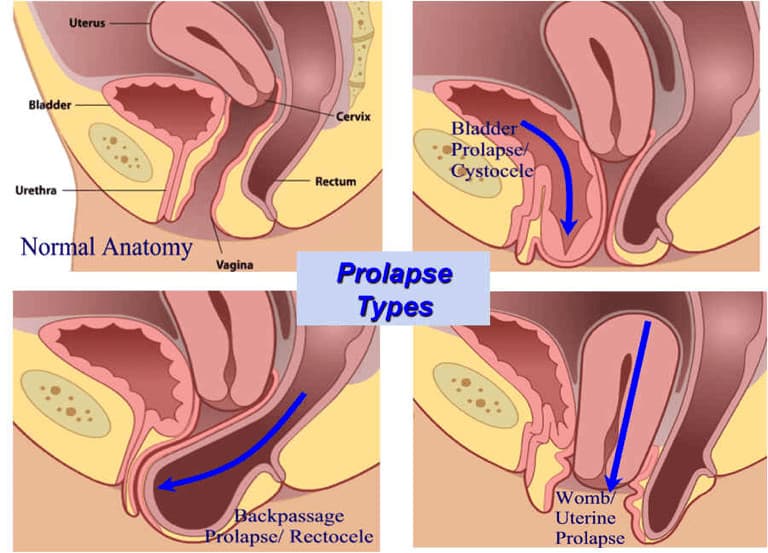What is a Prolapse After Birth?
Hello, fantastic parents and parents-to-be! Congratulations on your newest family member – what an exciting time! But amidst the joy and the celebrations, you might come across some post-birth conditions that are less talked about, yet crucial to be aware of. Today, we’re going to lovingly unwrap the topic of postpartum prolapse, a condition some mothers may experience after giving birth.
Let’s dive into a gentle but thorough exploration of what prolapse means in the postpartum context. We’ll answer all your questions with warmth and care, ensuring you have the knowledge to support your wellbeing on this amazing journey of motherhood.
Getting to Know Postpartum Prolapse
First things first, let’s clarify prolapse. After childbirth, a prolapse occurs when the muscles and ligaments supporting a woman’s pelvic organs weaken. This can cause one or more of the pelvic organs – the uterus, bladder, rectum, or top of the vagina (for those who have had a hysterectomy) – to drop or press into or out of the vaginal canal. Sounds a bit overwhelming, right? But don’t worry, we’re here to break all this down into bite-sized pieces of information.
Why Does Prolapse Happen After Birth?
During the fantastic voyage of pregnancy and childbirth, a woman’s body undergoes an incredible amount of change. The pressure of carrying a growing baby, along with the stretching and straining during delivery, can weaken the pelvic floor muscles. Sometimes, these muscles and tissues just do not bounce back right away, and this can lead to prolapse.
Symptoms of Postpartum Prolapse
Here are some of the telltale signs that could indicate a prolapse:
- A feeling of heaviness or dragging in the pelvis
- Sensitivity or pain in the pelvic area or lower back
- Visible or palpable lump in the vagina or feeling like something is ‘coming down’
- Difficulties with sexual intercourse
- Changes in bladder and bowel movements, such as incontinence or difficulty urinating
If you’re experiencing any of these symptoms, take heart! It’s essential to approach the subject without fear or embarrassment. This condition is quite common and there are many ways to manage it and improve symptoms.
Types of Postpartum Prolapse
There are various types of prolapse that can occur, depending on which organ is affected:
- Uterine prolapse: When the uterus descends towards the vaginal opening
- Cystocele: When the bladder prolapses into the front wall of the vagina
- Rectocele: When the rectum bulges into the back wall of the vagina
- Enterocele: When small intestines push down onto the top part of the vagina, often following a hysterectomy
Understanding the type of prolapse is pivotal in seeking the correct treatment and getting back to feeling fabulous. But remember, you are not alone! Many women encounter this issue after giving birth and there is a community of support and medical care designed to help.
Diagnosis and Professional Support
If you have symptoms that point to a prolapse, your first step is to consult with your healthcare provider. They might perform a pelvic exam to gauge the degree of prolapse. Depending on their findings, they could refer you to a specialist such as a gynecologist or a urogynecologist, medical professionals who specialize in female pelvic medicine and reconstructive surgery.
Having the right support network around you is just as important as the medical care you receive. Talk to your partner, close family members, or friends about your experience. Joining a support group, either in person or online, can also provide not only practical advice but a comforting reminder that you are not navigating this journey alone.
Remember, dear reader, seeking help is a sign of strength, not weakness. Acknowledge how absolute wonder-woman you are for carrying and giving birth to new life, and now it’s time to care for yourself with just as much love and attention.
Stay tuned as we delve more deeply into managing and treating prolapse post-birth in our upcoming sections, because knowledge is power, and empowering mothers is what this guide is all about!

5 Essential Things Parents Should Know In Preparing For Prolapse After Birth
While we’ve established a foundational understanding of postpartum prolapse, we know that being prepared is half the battle won. So here are five crucial things every parent should be clued up on when it comes to preparing for a potential prolapse after birth.
1. Awareness is Key
Having a solid knowledge about prolapse even before giving birth is the first important step. Understanding what to look out for and knowing the symptoms can prompt timely action, hence, reducing the risk of prolapse worsening over time.
2. Pelvic Floor Exercises
One of the best preventative measures is strengthening your pelvic muscles. You might have heard of Kegel exercises, which involve contracting and relaxing the muscles that form part of the pelvic floor. These can be done during pregnancy and after giving birth, and they’re a fantastic way to help your body recover and reduce the risk of prolapse.
3. Lifestyle Adjustments
Maintaining a healthy lifestyle is beneficial, not just for prolapse prevention but for overall wellness. Eating a balanced diet, maintaining a healthy weight, and avoiding activities that put excessive pressure on the pelvic floor, like heavy lifting, are all sensible choices.
4. Post-Birth Recovery Plans
After delivery, it’s important to allow the body adequate time to heal. This includes resting properly and when you’re ready, gradually reintroducing physical activity into your routine. Consultation with healthcare providers or fitness experts who specialize in postpartum recovery can give you a safe and effective plan to follow.
5. Professional Support and Resources
Identify the healthcare resources available to you, such as pelvic floor therapists, postpartum recovery specialists, and support groups. Knowing where and how you can get support will ease the process should you need assistance dealing with prolapse.
Comprehending the nuances of postpartum prolapse can indeed be a tad overwhelming, dear parents. But with the right preparation and knowledge, you can better manage or even prevent this condition. Armed with the warmth of understanding and the shield of awareness, you’re now more empowered to take care of your body and embrace the joys of motherhood.
Always remember, navigating the postpartum period is not only about looking after your little one but also about nurturing yourself. This is a period of recovery, adaptation, and incredible transformation. Embrace it with grace and patience, and see yourself emerge stronger than ever. Dance to the rhythm of motherhood with confidence, knowing that you are equipped to face its trials with poise and information.
As you continue this beautiful journey, keep an eye out for our next enlightening sections where we will delve into managing and treating prolapse post-birth. Here’s to a healthy and happy postpartum experience for all you incredible mamas out there!
See more great Things to Do with Kids in New Zealand here. For more information see here
Disclaimer
The articles available via our website provide general information only and we strongly urge readers to exercise caution and conduct their own thorough research and fact-checking. The information presented should not be taken as absolute truth, and, to the maximum extent permitted by law, we will not be held liable for any inaccuracies or errors in the content. It is essential for individuals to independently verify and validate the information before making any decisions or taking any actions based on the articles.




